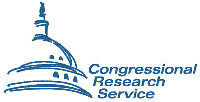United States Congress

Congressional Research Service Reports
Date of this Version
2008
Abstract
Scientists and engineers can now examine, design, and manipulate materials at the molecular level, termed “nanoscale,” between 1 and 100 billionths of a meter. The U.S. government has invested heavily to ensure that American industry remains a global leader in the field, because the products of nanotechnology are seen to have great economic potential and offer possible solutions to national problems ranging from energy efficiency to detection of agents of biological warfare. Optimism about nanotechnology is tempered, however, by concerns about the unknown potential of nanoscale materials to harm the environment and human health. Some have called for federal regulation of potential environmental, human health, and safety (EHS) risks, arguing that the lack of federal EHS regulations increases the risks of unanticipated adverse consequences due to human or environmental exposure to engineered nanomaterials. The cost of such consequences would depend on their actual, as well as publicly perceived, severity, frequency, and reversibility. The cost to the nanotechnology industry could be great, if consumers responded to a potential threat of harm by indiscriminately rejecting all products of nanotechnology, rather than the offending nanomaterial or an individual application. Others oppose federal regulatory requirements, arguing that they might unnecessarily delay the environmental, health, and economic rewards expected from nanotechnology.
Questions about the need for, and ideal form of, nanotechnology regulations are exceedingly difficult to address, given the current state of scientific understanding of engineered nanoscale materials. This report considers certain challenges faced by scientists, entrepreneurs, and government officials involved with nanotechnology research, as they strive to define the characteristics of nanomaterials, the potential EHS risks, and how they might be addressed. Challenges include the wide variety of nanomaterials and applications; lack of basic information about their properties; lack of conventions for naming, measuring and identifying nanomaterials; the proprietary nature of some critical information; the need to prioritize federal resource needs; and a possible lack of clear statutory authority or appropriate regulatory framework to anticipate or respond to any identified risks. For more information about the national nanotechnology research agenda, appropriations, and authorizing legislation, see CRS Report RL34401, The National Nanotechnology Initiative: Overview, Reauthorization, and Appropriations Issues.
These difficulties may be surmounted over time without significant legislative action, or Congress may choose to intervene. If it does, it might choose any of several approaches. Possible approaches include increasing funding for workshops in standardization or other research relevant to identifying and possibly ameliorating any environmental or human health and safety concerns associated with nanomaterials; changing the allocation of research money among agencies or the interagency research management structure; adopting a national or international research strategy; or enacting legislation that authorizes, mandates, or constrains agency actions to require information collection or to restrict production, sale, use, or disposal of nanomaterials. Each risk management approach has potential positive and negative consequences that Congress may want to consider.


Comments
Published by Congressional Research Service, www.crs.gov, RL34332